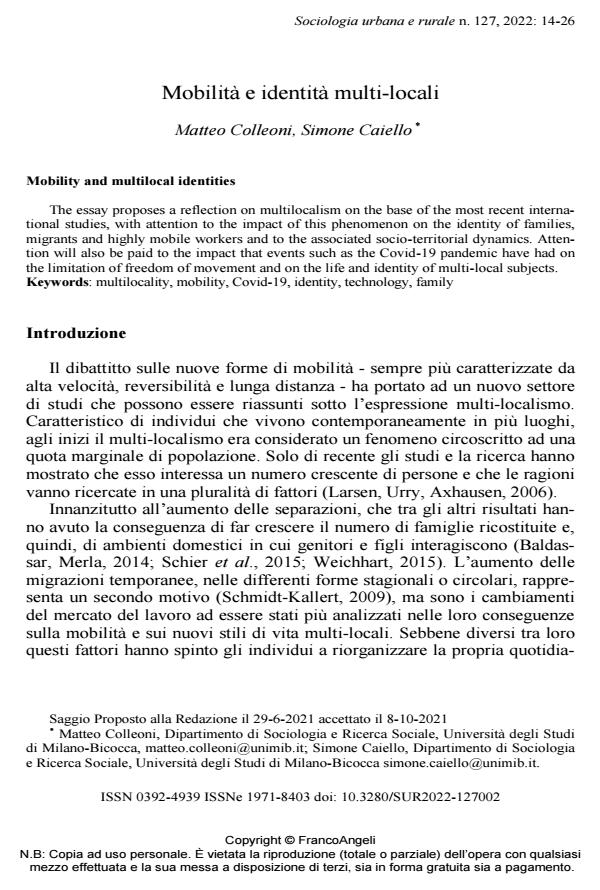Mobilità e identità multi-locali
Titolo Rivista SOCIOLOGIA URBANA E RURALE
Autori/Curatori Matteo Colleoni, Simone Caiello
Anno di pubblicazione 2022 Fascicolo 2022/127
Lingua Italiano Numero pagine 13 P. 14-26 Dimensione file 252 KB
DOI 10.3280/SUR2022-127002
Il DOI è il codice a barre della proprietà intellettuale: per saperne di più
clicca qui
Qui sotto puoi vedere in anteprima la prima pagina di questo articolo.
Se questo articolo ti interessa, lo puoi acquistare (e scaricare in formato pdf) seguendo le facili indicazioni per acquistare il download credit. Acquista Download Credits per scaricare questo Articolo in formato PDF

FrancoAngeli è membro della Publishers International Linking Association, Inc (PILA)associazione indipendente e non profit per facilitare (attraverso i servizi tecnologici implementati da CrossRef.org) l’accesso degli studiosi ai contenuti digitali nelle pubblicazioni professionali e scientifiche
Il saggio propone una riflessione sul multilocalismo alla luce dei risultati degli studi internazionali più recenti, con attenzione all’impatto di tale fenomeno sulle identità famigliari, dei migranti e dei lavoratori altamente mobili e alle dinamiche socio-territoriali a ciò collegate. Attenzione verrà anche posta alla lettura dell’impatto che eventi come la pandemia da Covid-19 hanno avuto sulla limitazione della libertà di movimento e sulla vita e identità dei soggetti multi-locali.
Parole chiave:multilocalismo, mobilità, identità, Covid-19, tecnologia, famiglia.
- The role of neighborhood quality in predicting place attachment: Results from ITA.LI, a newly established nationwide Italian panel survey Luca Bottini, in Cities 104632/2023 pp.104632
DOI: 10.1016/j.cities.2023.104632
Matteo Colleoni, Simone Caiello, Mobilità e identità multi-locali in "SOCIOLOGIA URBANA E RURALE" 127/2022, pp 14-26, DOI: 10.3280/SUR2022-127002